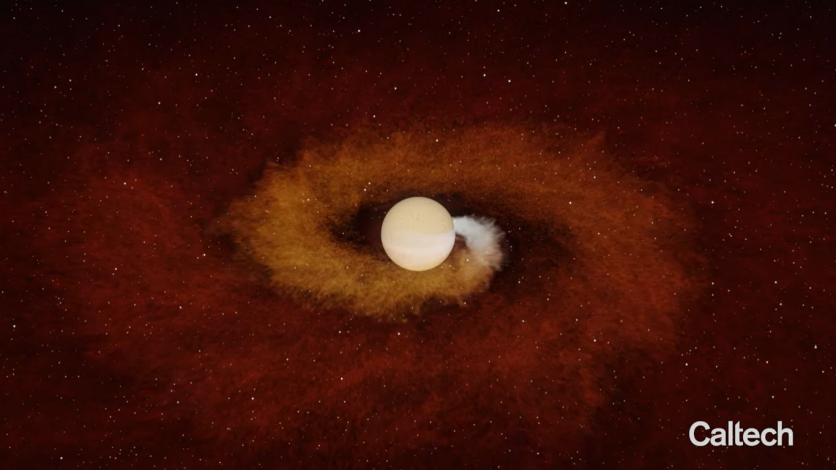NASA has recently unveiled a fascinating animation that shows the extraordinary phenomenon of a star devouring one of its own planets.
This unprecedented event offers a rare glimpse into the cosmic event that awaits numerous planets as they inevitably spiral toward their host stars. This particular occurrence was observed directly for the first time in 2020 when an aging star swallowed one of its own planets, leaving scientists astounded by the unfolding celestial drama.

NASA Shows Animation of Sun-like Star Eating a Planet
The star, called ZTF SLRN-2020, bears similarities to our Sun. Situated around 12,000 light years away, in the constellation of the Eagle (Aquila), this celestial body serves as the host to a Jupiter-like planet.
While it is not uncommon for planets to meet their demise by succumbing to the gravitational forces of their parent star, this event marks the inaugural occasion on which astronomers have witnessed such an event in real time.
The enthralling animation, recently released by NASA, showcases the intricate interplay between the star and its ill-fated planetary companion. As the Jupiter-size planet ventures perilously close to the outer regions of its host star, its once majestic atmosphere is subjected to a merciless stripping process.
After the fuel in its core ran out, the star reportedly started to grow in size, reducing the gap with its neighboring planet and eventually consuming it entirely. The intense gravitational forces exerted by the star tore apart the gas enveloping the planet, resulting in a mesmerizing spectacle of swirling cosmic gases.
During this celestial dance, a fraction of the planet's gas was gravitationally absorbed into the voracious atmosphere of the star, while the remaining expelled gas dissipated into the vast space void. The dynamic forces and energies on display provide a captivating demonstration of the immense power embedded within the cosmos.
Read Also : NASA Hubble Discovers Saturn's Ring System Heats Planet's Atmosphere-A Never-Before-Seen Phenomenon!
Will the Sun Eat the Earth Too?
This captivating event not only offers a glimpse into the fate of a distant planet but also provides profound insights into the workings of our vast universe. It serves as a reminder of the dynamic nature of celestial bodies, where destruction paves the way for the birth of new cosmic phenomena.
Scientists often discuss and contemplate the future of our planet Earth in the context of cosmic events and the long-term evolution of celestial bodies.
The idea that our planet may face a similar fate as it spirals toward the Sun over an extended period of time, approximately eight billion years from now, is a concept that has been proposed by some scientists based on our current understanding of stellar evolution and the dynamics of planetary systems.
This remarkable animation released by NASA serves as a poignant reminder of the countless wonders that lie beyond our terrestrial boundaries, inspiring humanity to continue exploring and expanding our understanding of the cosmos.
Related Article : NASA's Hubble Space Telescope Captures 'Butterfly Nebula' In Stunning Motion | Fun Facts About This Beautiful Space Butterfly

ⓒ 2026 TECHTIMES.com All rights reserved. Do not reproduce without permission.




